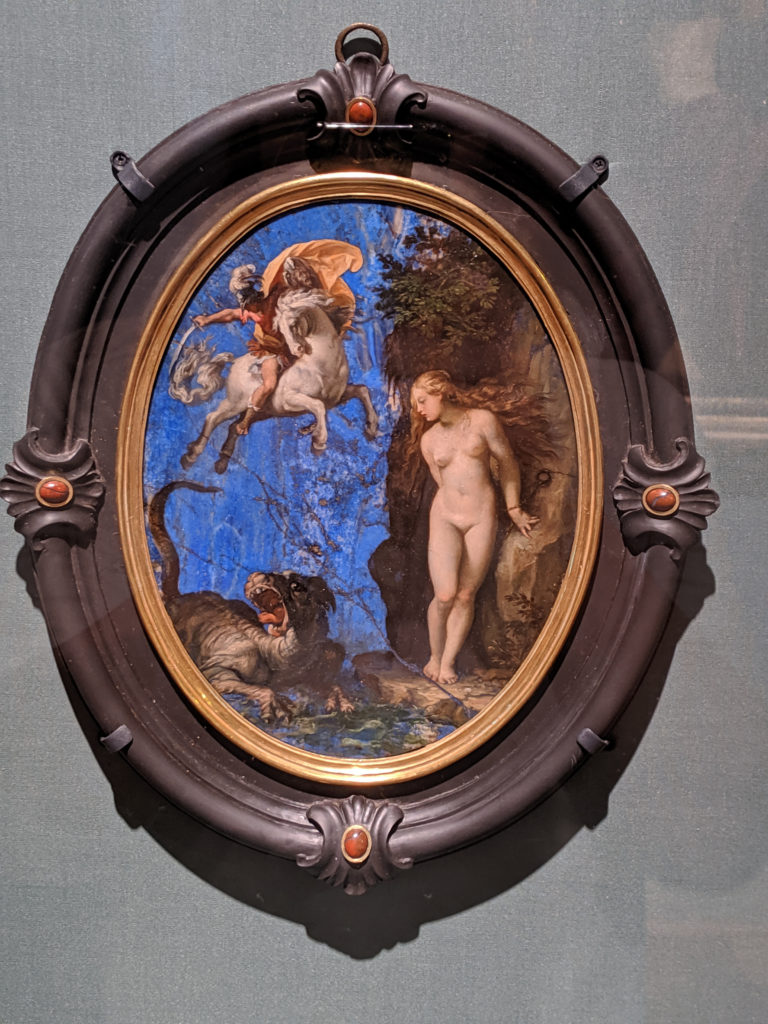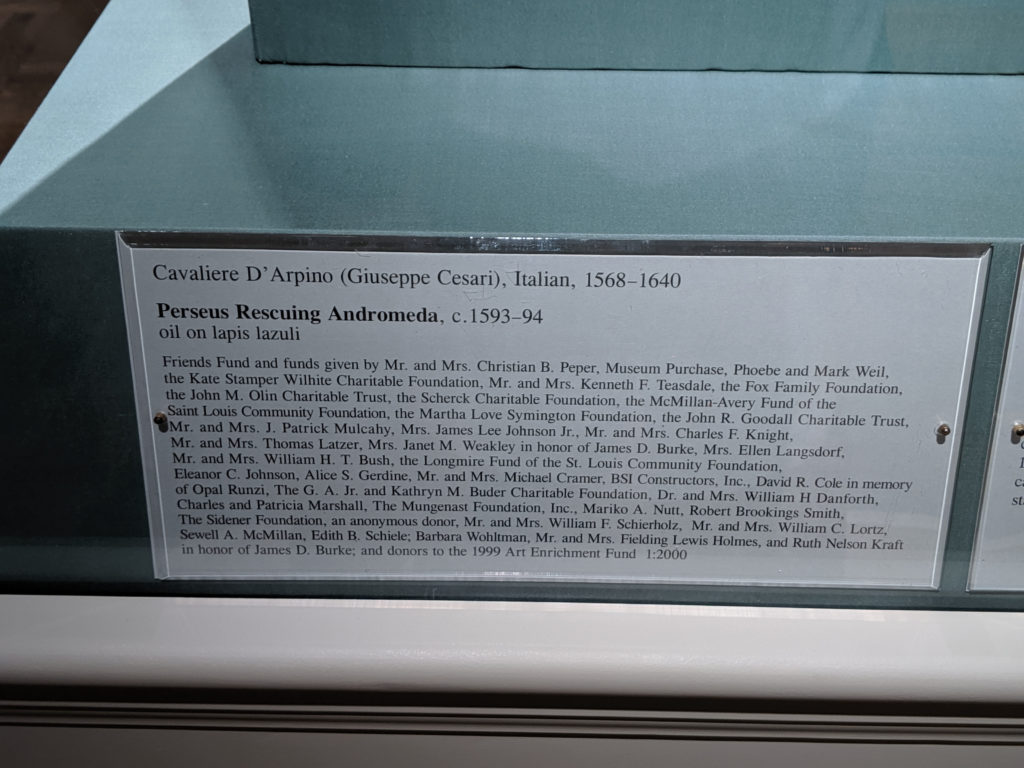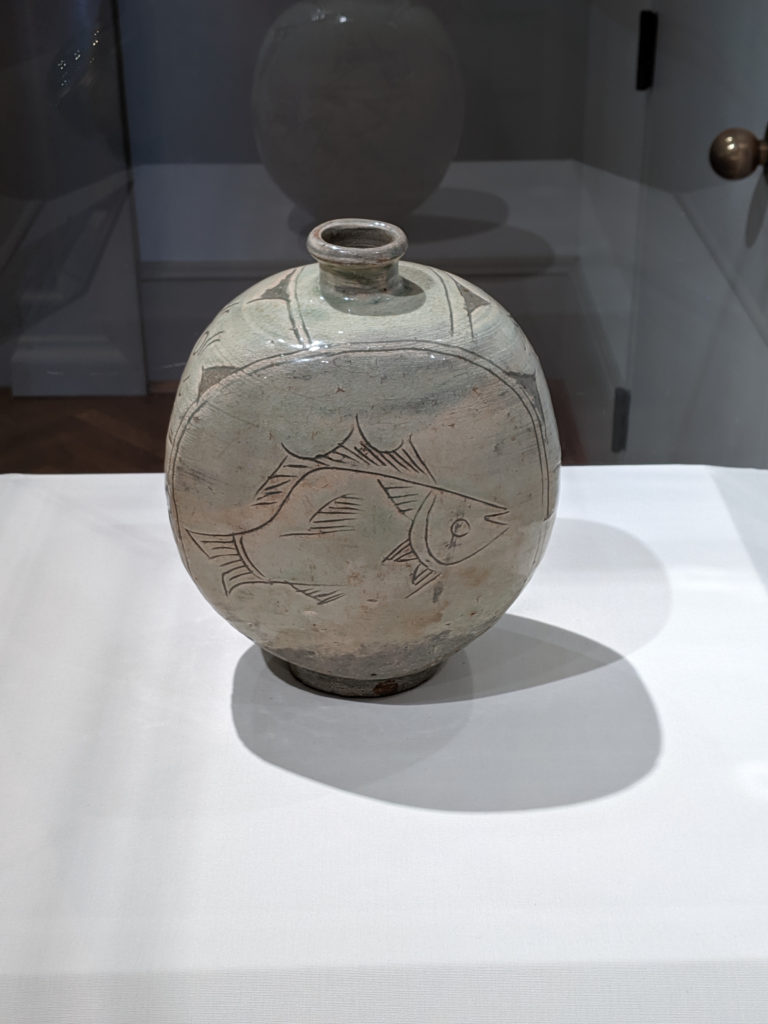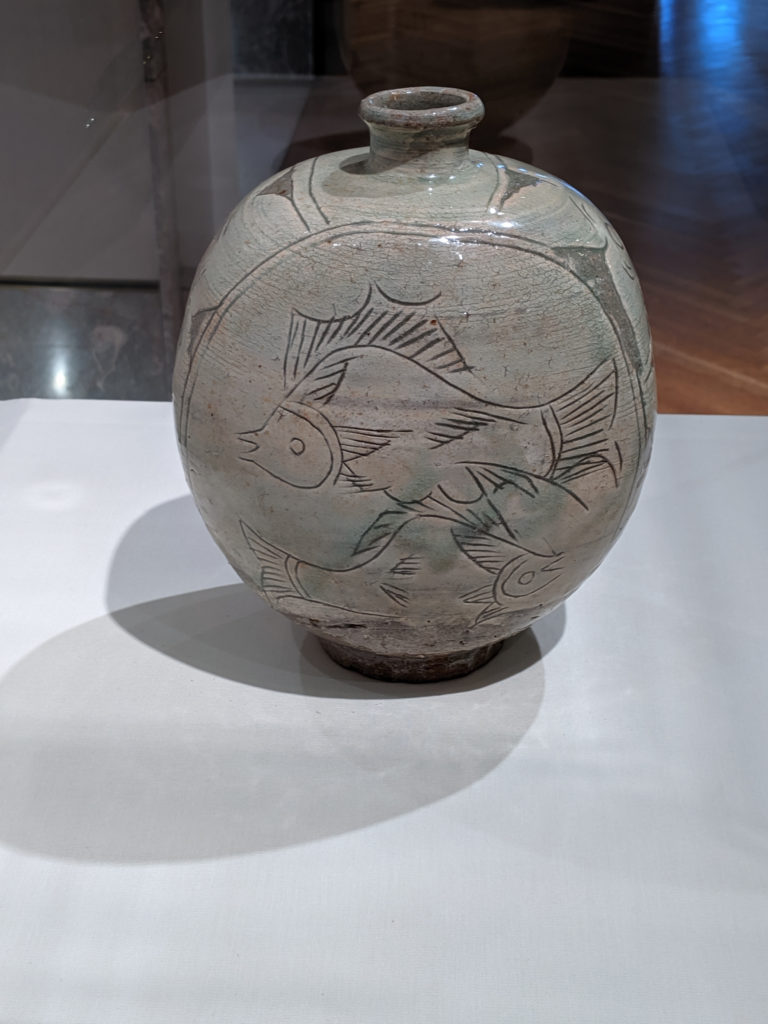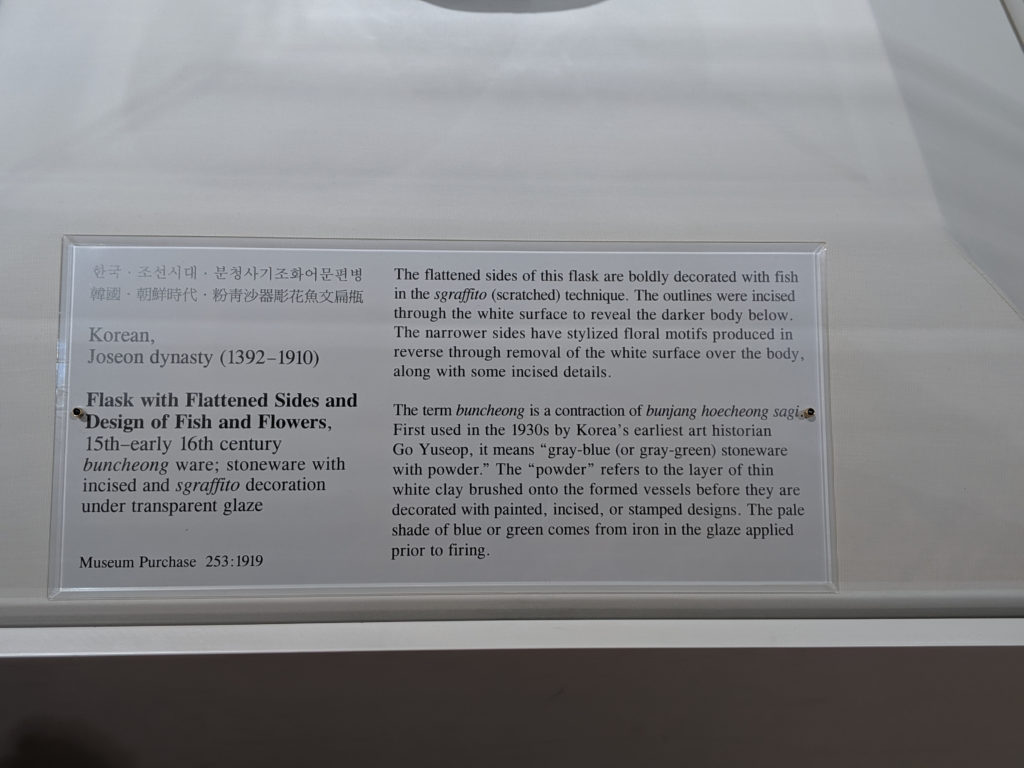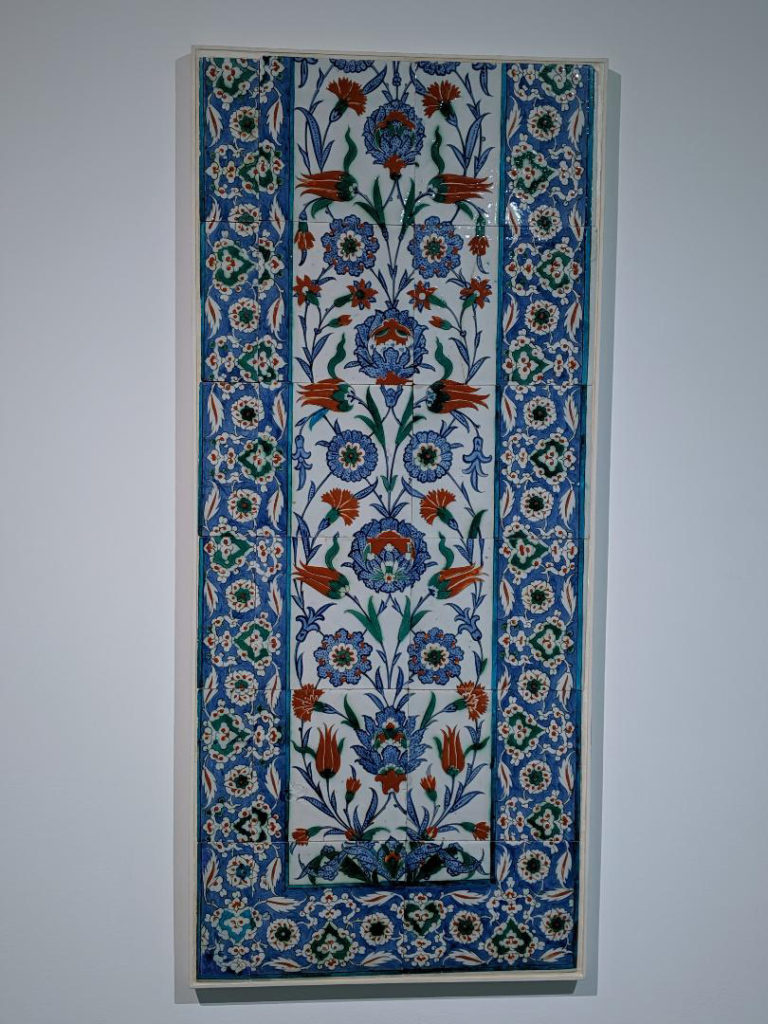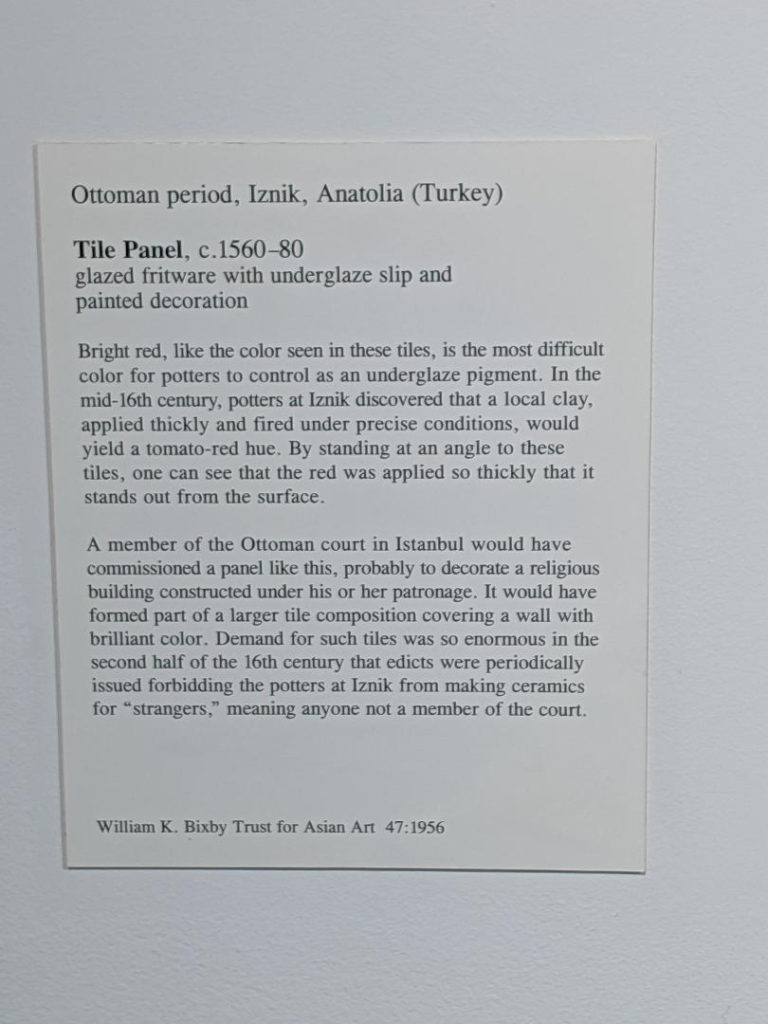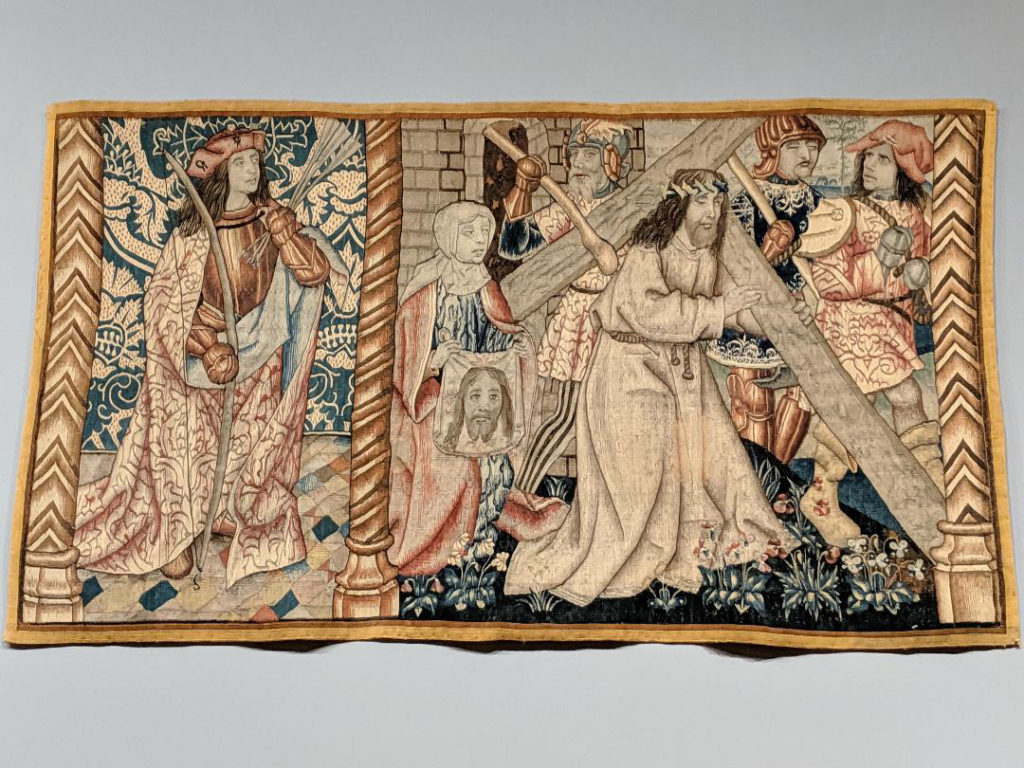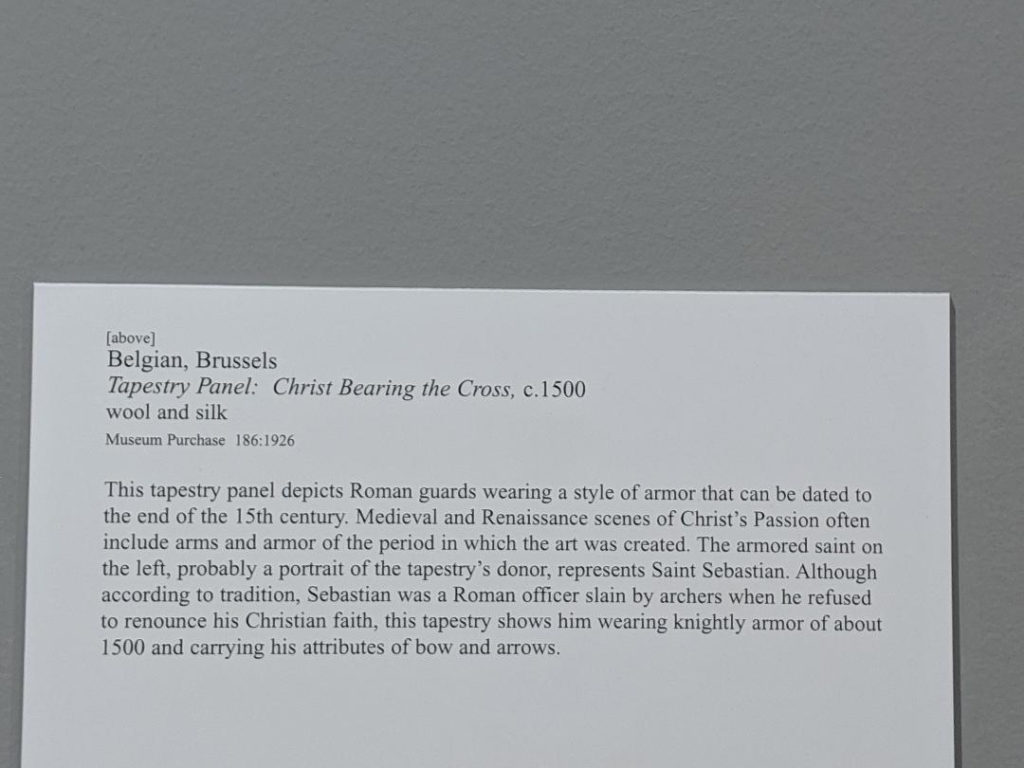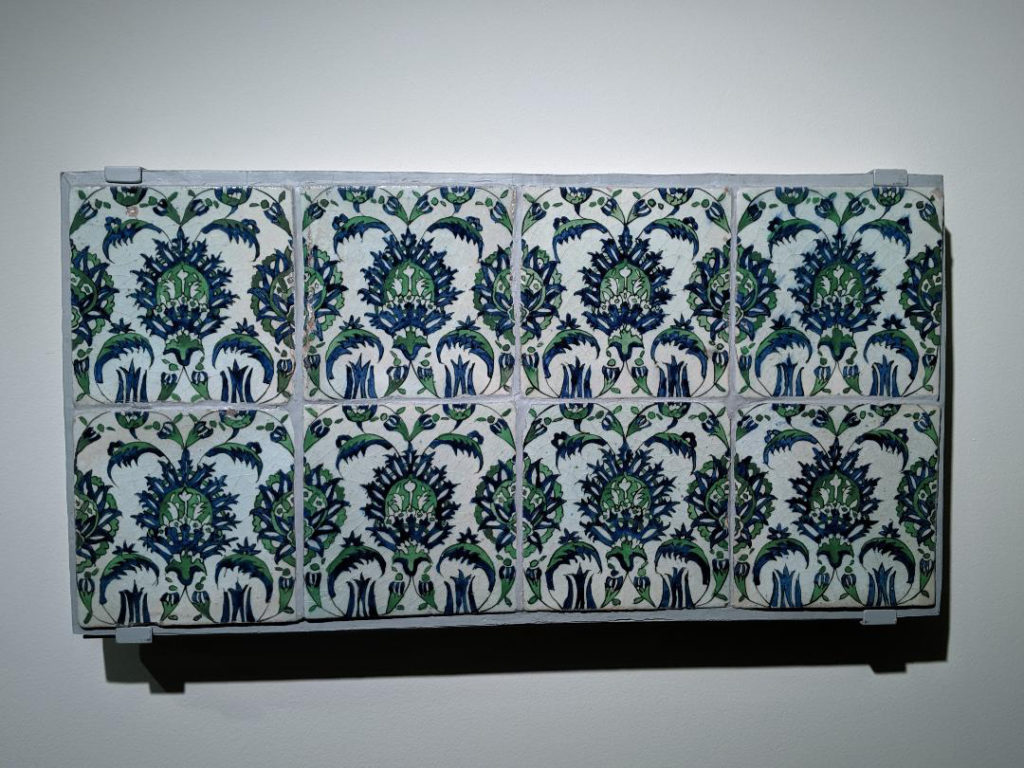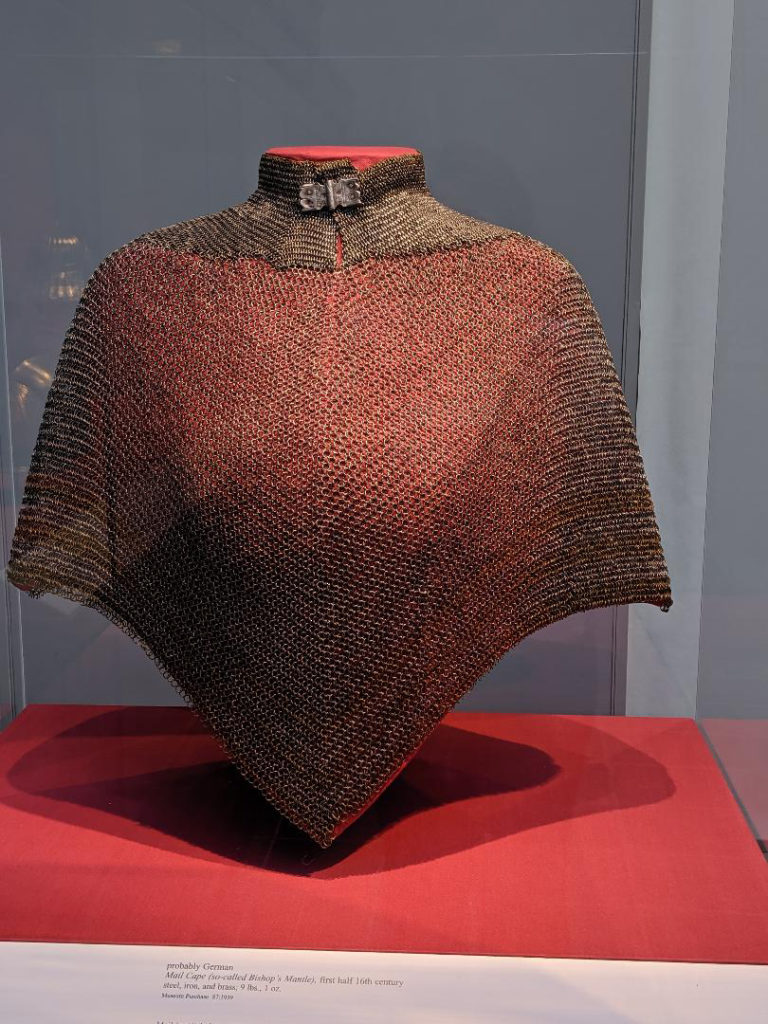The most interesting thing about this, compositionally speaking, is that the grain of the lapis is used structurally as part of the painting as much as any of the actual painted lines. I like the balls it takes to go, “Hey, nature? Suck it.”
Tag: 16th century
Saturday
Monday
Monday
Mmm, fiber arts. In this case, it’s just wool and silk, no cloth of silver or cloth of gold, but it’s still a lovely piece and you can see the care that went into the weaving and dyeing of the yarn/thread by the vibrancy of the colors that remain to this day (especially the blue-green hues, and the reddish-browns).
Wednesday
Down on the first floor, hiding at the bottom of a stairwell, rarely noticed for the last 30 years or so has been this beautiful set of tilework. I say unnoticed because how many people actually look at what’s at the bottom of the stairwells? I do. I look everywhere at everything. I look in every nook and corner, around every doorway, up every staircase.
I’m in awe that these tiles have survived in this condition for this long; the colors are just as vivid now as the day they were fired. The scrollwork is just as ornate as the day it was painted. I love everything about them. They are one of my favorite hidden gems in the SLAM museum collection.
Monday
The medieval galleries are some of the most interesting in the entire building; everything from tapestries, armour, weaponry, relics, religious art, etc., are to be found within them, and even a couple of surprises (that I won’t spoil for you). The mail cape is hidden away in a little corner room and if you don’t know where to look, you’ll never find it. When the sun is shining down into the room and glinting off of the metal, it is truly a stunning sight to behold: glinting in the light and blinding in its intensity, it is a testament to its creator, long-gone.
